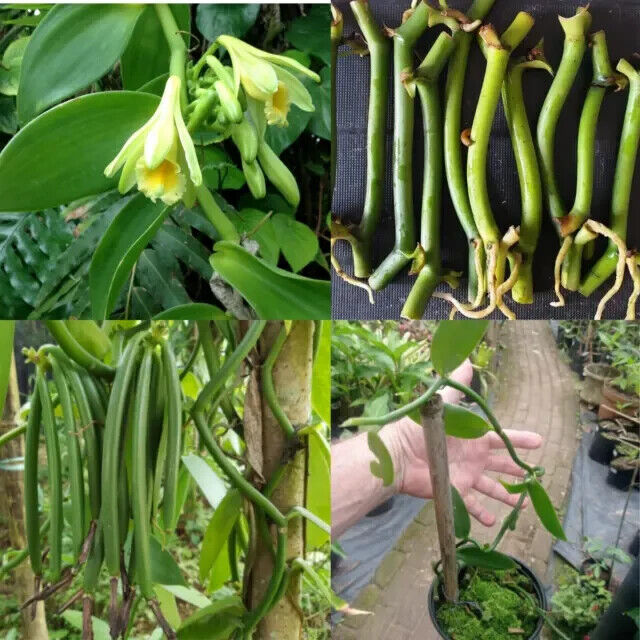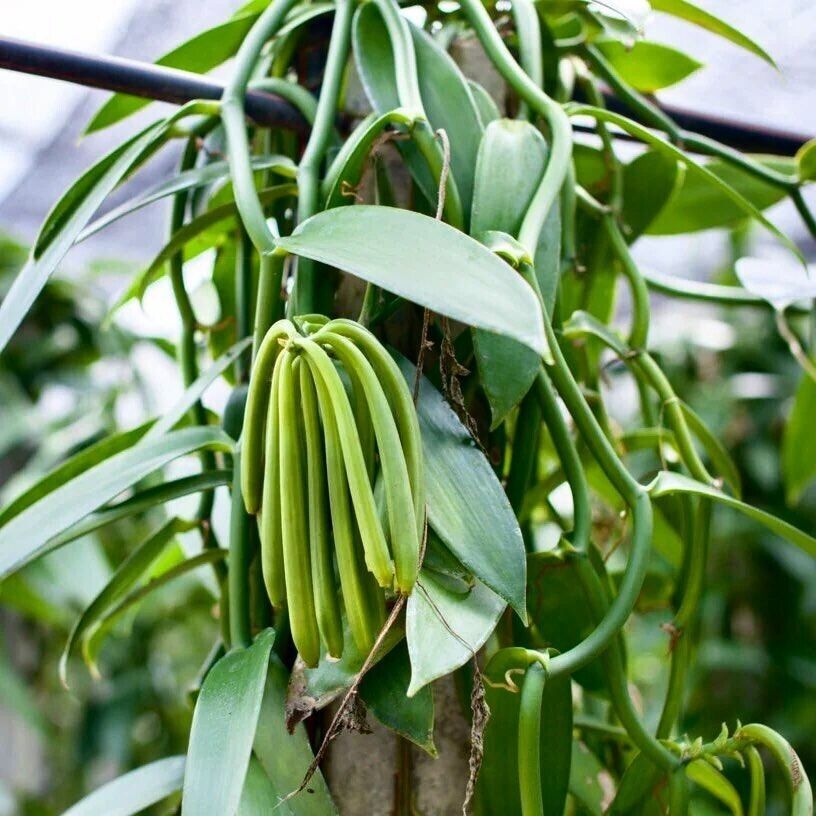Senci Green Garden
Vanilla cuttings (Vanilla planifolia) orchid species live well-Rooted cuttings
Vanilla cuttings (Vanilla planifolia) orchid species live well-Rooted cuttings
Couldn't load pickup availability
Vanilla cuttings (Vanilla planifolia)
100% Fresh cuttings
Vanilla planifolia is a species of orchid native to Mexico and Central America. It is the primary source of the vanilla flavoring derived from its pods. Here is a detailed.
Physical Characteristics
Growth Form: Vanilla planifolia is a perennial vine that can grow up to 10 meters (33 feet) in length. It is a climbing plant that attaches itself to trees or supports using aerial roots.
Leaves: The leaves are flat, fleshy, and oval-shaped, with a glossy, dark green appearance. They can grow up to 20 cm (8 inches) long and 5 cm (2 inches) wide.
Stems: The stems are long, green, and cylindrical, capable of producing roots at each node.
Flowers
Appearance: The flowers are large, creamy-white to pale yellow, and about 5 cm (2 inches) in diameter.
Structure: Each flower has three sepals and three petals, with one of the petals forming a distinctive, elongated lip.
Blooming: Flowers bloom sequentially on a raceme, typically in the morning, and each flower lasts for only one day.
Pollination: In its native habitat, pollination is carried out by specific species of bees and hummingbirds. However, outside of its native range, vanilla flowers must be pollinated by hand.
Fruit
Pods: After successful pollination, the plant produces elongated, green seed pods known as vanilla beans. These pods can grow up to 15-20 cm (6-8 inches) long.
Development: The pods take 8-9 months to mature and turn a yellowish color when ripe. They are harvested when still green and undergo a curing process to develop the characteristic vanilla flavor.
Habitat and Cultivation
Climate: Vanilla planifolia thrives in tropical climates with temperatures between 20-30°C (68-86°F) and high humidity.
Soil: It prefers well-draining, loamy soil rich in organic matter.
Light: The plant requires partial shade and does not tolerate direct sunlight for extended periods.
Propagation: Vanilla planifolia is commonly propagated through stem cuttings, which are planted and allowed to root.
Uses
Culinary: The cured vanilla pods are used to produce vanilla extract, a popular flavoring in baking, beverages, and desserts.
Aromatic: Vanilla is also used in perfumes and aromatherapy for its pleasing fragrance.
Medicinal: In traditional medicine, vanilla has been used for its purported antioxidant and anti-inflammatory properties.
Cultivation Challenges
Pollination: The primary challenge in vanilla cultivation is the need for hand pollination outside its native habitat.
Disease: Vanilla plants are susceptible to fungal infections and other diseases, which require careful management.
Vanilla planifolia remains a valuable and widely cultivated plant due to its significant economic importance and the unique flavor it provides.
Share






















